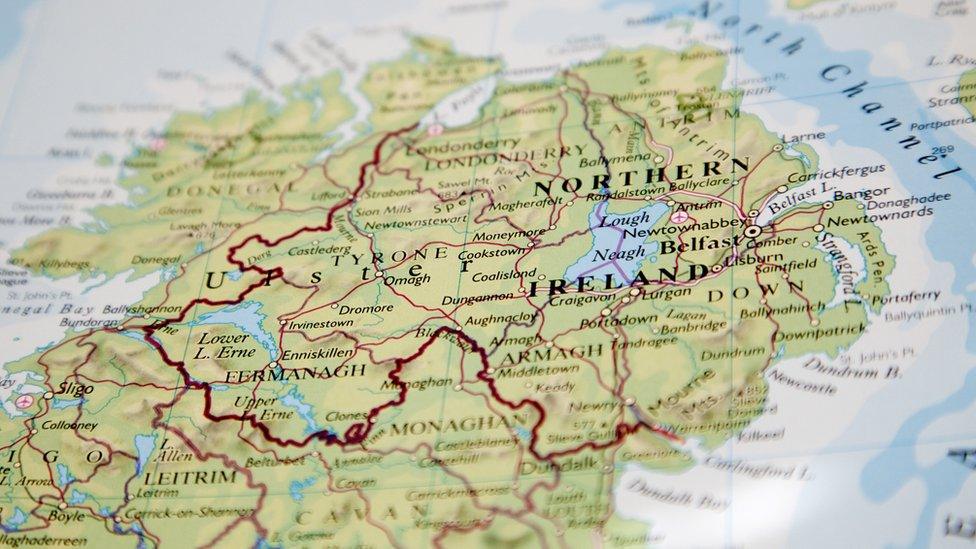NI 100: How Northern Ireland's birth was marked by violence
- Published
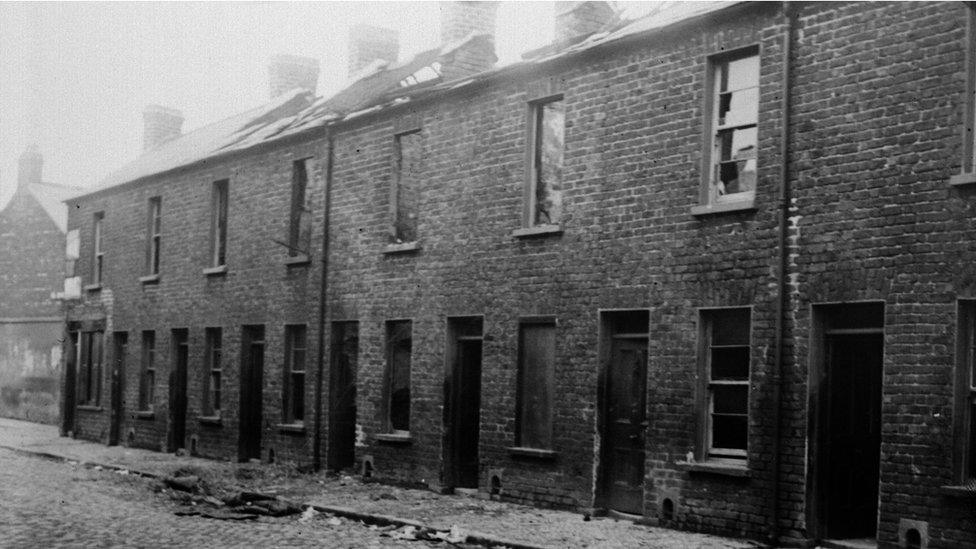
Catholic families were forced out of their homes in some areas, including in Antigua Street in Belfast in May 1922
The partition of Ireland and creation of Northern Ireland 100 years ago was marked by two extremes.
On the one hand, 1921 was a year of grand political set pieces, of speech-making, of pomp and ceremony.
Away from all that, ordinary people in the new state of Northern Ireland were living their lives against a backdrop of simmering violence.
The impact of the War of Independence, which broke out in 1919, was increasingly creeping north.
In 1920 there was fighting in the streets in Londonderry following elections, with skirmishes between the IRA and the UVF.
In June 1920 alone, 20 people died in the city.
IRA shootings led to riots in Banbridge, while Catholic homes and businesses were attacked in places including Dromore and Lisburn.
But the most sustained sectarian violence was in Belfast.
Historian Eamon Phoenix said the city was "the fulcrum" of the bloodshed.
"You have a massive Specials presence at that time. The Ulster Specials, set up at the end of 1920, are armed by the British government," he said.
"They run to 32,000 strong, and they are the key police force in Belfast and along the border.
"You have the British Army, you have the declining Royal Irish Constabulary (RIC), which is now being phased out.
"You have the IRA, who would have about 1,200 men in Belfast.
"They see themselves as defending the Falls and other nationalist areas.
"These are shocking times, but Belfast is really the fulcrum of so much of this violence."
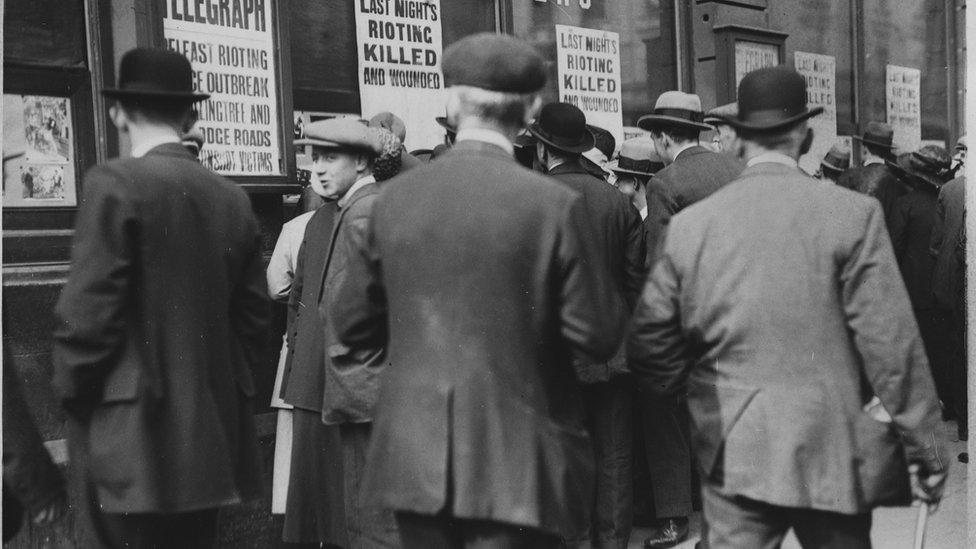
People gather outside the Belfast Telegraph offices to check through lists of those killed during rioting in 1920
More than 450 people were killed in Belfast in the conflict between June 1920 and July 1922.
Nearly 60% were Catholic, and the overwhelming majority were civilians.

The BBC News NI website has a dedicated section marking the 100th anniversary of the creation of Northern Ireland and partition of the island.
There are special reports on the major figures of the time and the events that shaped modern Ireland available at bbc.co.uk/ni100.
Year '21:You can also explore how Northern Ireland was created a hundred years ago in the company of Tara Mills and Declan Harvey.
Listen to the latest Year '21 podcast on BBC Sounds or catch-up on previous episodes.

Atrocities were inflicted on both communities.
One made headlines around the world - the murders of prominent nationalist businessman Owen McMahon, four of his sons, and an employee, Edward McKinney.
The shooting happened at the family home in north Belfast in March 1922. To this day, it's still not clear why the family was targeted.
"This one was just different because it singled out a single family," said local historian Joe Baker.
Mr McMahon was a friend of the moderate nationalist MP Joe Devlin. He was not involved with any republican groups.
"We know who carried it out but there was never any explanation as to why," Joe Baker added.
"The people responsible were a reprisal unit within the RIC. But the McMahons had nothing whatsoever to do with any republican groups or even the belief."
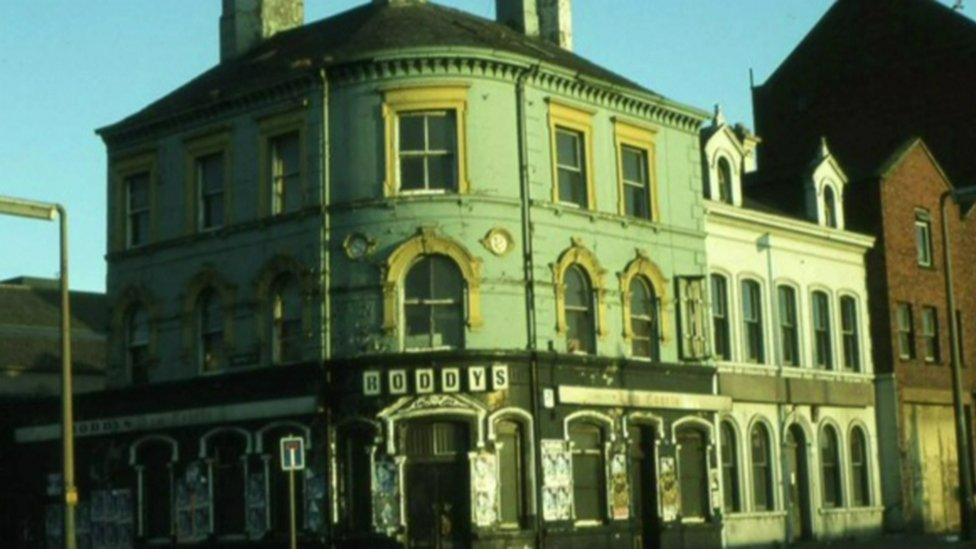
Three RIC officers were shot dead in Roddy's pub
The early 1920s also saw a resurgence in IRA activities.
There were attacks on trams targeting Protestant workers, on politicians and on police officers.
In January 1921, IRA gunmen attacked Roddy's pub and hotel in Belfast, where the Laganside court complex now stands. Three RIC officers were shot as they lay in their beds.
After 1922, the violence settled down into an uneasy peace - but the sectarian unrest would be a dangerous feature of Northern Ireland for decades to come.
Related topics
- Published4 February 2021
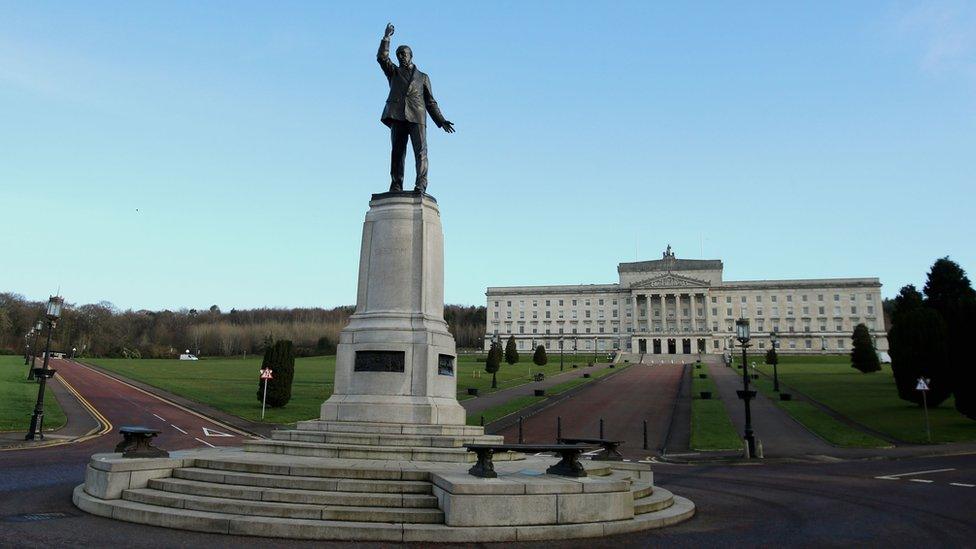
- Published21 December 2020
